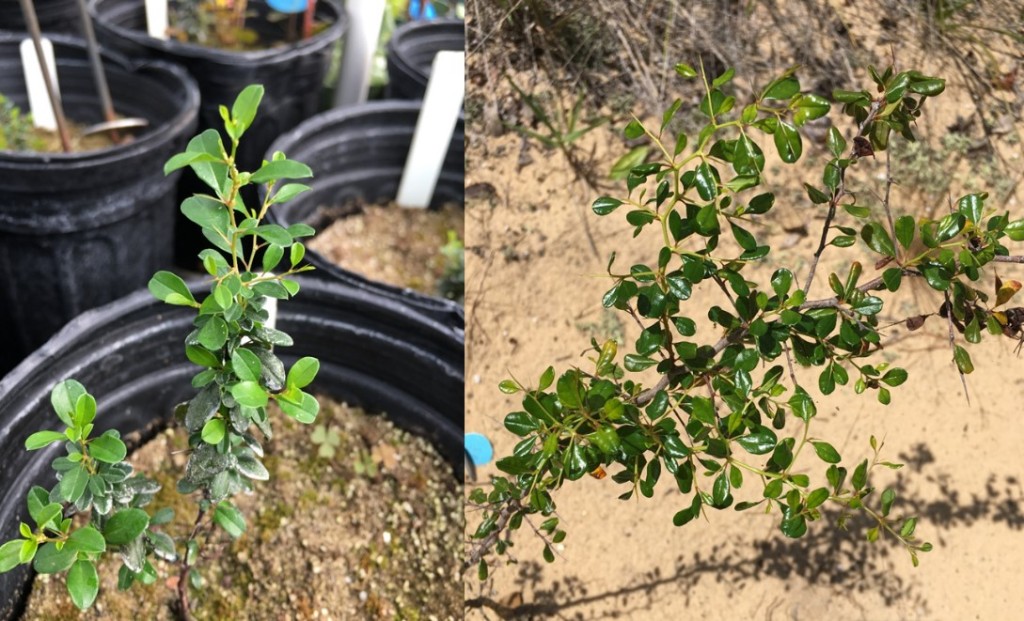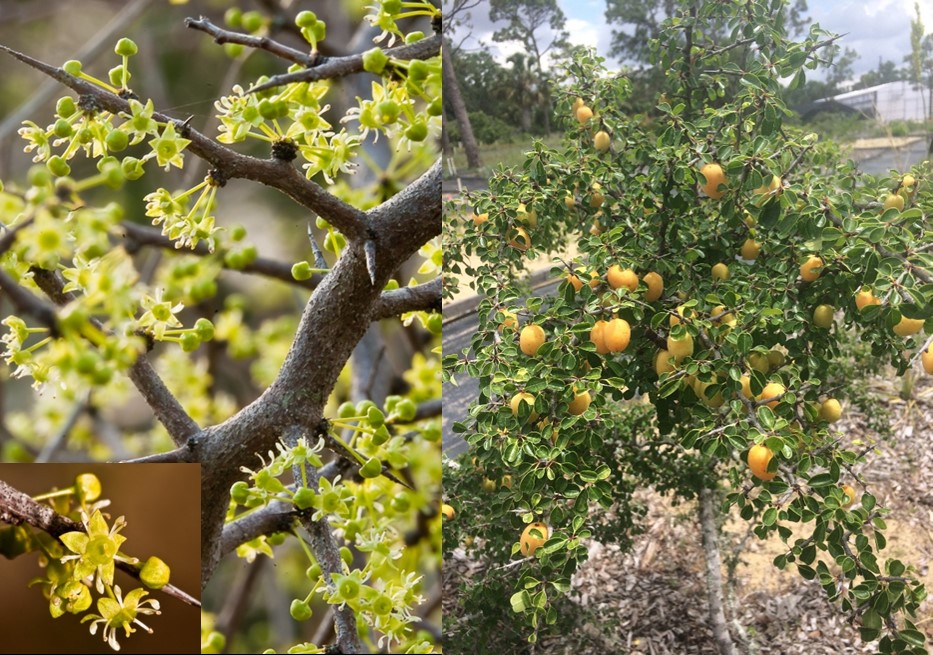
Author: Sterling Herron
Deep in the sandhills of the Lake Wales Ridge lies a mysterious denizen of this ancient landscape: Florida Ziziphus (Ziziphus celata), also known as Florida Jujube. What makes this plant so special? It is one of the rarest plants in Florida, with only a handful of populations known to remain in the wild, a number of those occurring in our own Highlands County. In fact, Florida Ziziphus was once thought to be extinct, but through the discovery of hidden populations and conservation efforts of numerous biologists and citizens alike, the species has crept back from the edge of disappearance. As its name suggests, it also holds value as a wild relative of the cultivated jujube fruit (Ziziphus jujuba). Like its edible cousin, Florida Ziziphus produces a large crop of grape-sized orange fruits in early summer. It is the only ziziphus species native to Florida, with its closest relative native to California and Mexico (Ziziphus parryi), an indication of the long-ago connection between that region and our own.
At first glance, Florida Ziziphus is just another scraggly shrub dotting the scrub. Yet, a closer look reveals its unique qualities. Archbold Plant Ecology Research Assistant Dr. Sterling Herron, who helps lead Archbold’s Ziziphus research, notes: “Each winter, ziziphus plants shed their leaves and produce a constellation of tiny, star-shaped, fragrant flowers. Plants grow back vigorously in late spring / early summer, producing a rich foliage of small, shiny, round leaves, guarded by a legion of tiny thorns. Given the appropriate conditions, it can also produce a crop of small orange-colored fruits. It is perhaps most easily confused with Tough Buckthorn (Sideroxylon tenax) or Scrub Plum (Prunus geniculata), two other zigzagging, thorny scrub plants.”
While the plants themselves are physically robust, Florida Ziziphus as a species lacks genetic diversity. While hundreds of individual plants are known, many of these are actually natural clones of the same individual, having the same genetic makeup. In total, only about 40 genetically distinct individuals, or “genotypes”, are known from the wild. Furthermore, not just any two plants can cross to produce fruit – only certain combinations of genotypes are reproductively compatible.
So what does the future of Florida Ziziphus look like? Once bleak, the efforts of numerous scientists and citizens alike have improved the outlook of ziziphus. An Archbold-led collaboration to preserve this species spans many organizations and agencies, including Bok Tower Gardens, Florida Fish and Wildlife Conservation Commission, Florida Forest Service, The Nature Conservancy, and others. There are currently eight introductions on protected lands, and wild populations have been fortified with additional plants. “Florida Ziziphus now has a fighting chance,” says Dr. Aaron David, Archbold’s Director of Plant Ecology. He continues, “Nevertheless, ziziphus is not yet at the point where it can be self-sufficient, and still relies upon conservationists. It cannot be overstated how important each new genotype is to the persistence of this species. Thus, the discovery of new individuals and populations is a key component of the ziziphus recovery plan.”
Saving Florida Ziziphus also lies in the hands of citizens. While scientists are always on the lookout for plants in the wild, they cannot survey every inch of the Lake Wales Ridge. Although rare, this plant has historically been found in highly human-influenced habitats. In particular, a number of wild populations have been discovered in cattle pastures, likely because of the lack of heavy development and thus long-term preservation of this land. Much of the Lake Wales Ridge was once prime ziziphus habitat, that is, yellow sand scrub and sandhill, so it could pop up almost anywhere. You may have this Florida treasure in your own backyard! If you do observe a Florida Ziziphus plant or population, please don’t hesitate to reach out to the biologists at Archbold Biological Station.
While it comes with challenges, the recovery of Florida Ziziphus is within our grasp, and it provides a case study of hope for other plant species on the verge of extinction.

